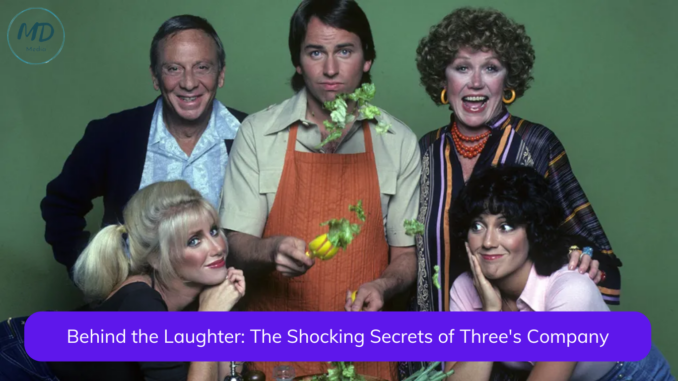
If you remember TV in the mid-1970s, you’ll no doubt recall it was the era of “jiggle TV,” where scripts were thinly-veiled excuses for Lynda Carter’s Wonder Woman to run in slow motion, Charlie’s Angels often solving crime in bikinis and the “hers and hers and his” set-up of Three’s Company that ran from 1977 to 1984. The latter has been on the minds of many recently, with mixed feelings when reflecting on the Three’s Company cast, smiles accompanied by a sense of sadness over the loss of John Ritter two decades ago and, much more recently, the heartbreaking death of Suzanne Somers.
The premise of the show is so simple — two women and a guy share an apartment, with the guy having to pretend that he’s gay to get away with the living situation from his far-more-conservative landlord and his landlord’s wife. And yet, there was comic gold there with slapstick humor, misunderstandings and lots of sexual innuendo.
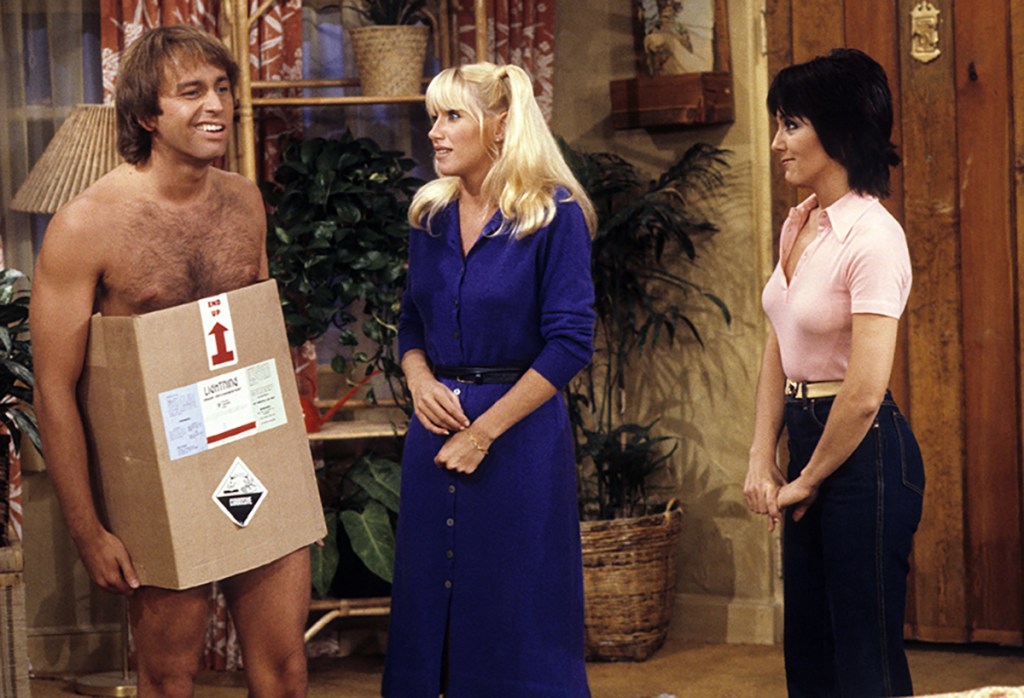
“People initially may have tuned in for the titillation, but they kept knocking on the trio’s door for the laughs,” says Chris Mann, author of the definitive book on the series, Come and Knock on Our Door: A Hers and Hers and His Guide to Three’s Company. “The show’s zany format was a welcome departure from life’s stresses. It was a great escape with friends who were each others’ — and our — extended family. The same holds true today, but now we get a super-nostalgic blast to the past that helps us deal with present-day anxieties. And the fact that it stars beloved actors and comedy icons is the cherry on top. It’s a feel-good trip to a place where problems are just misunderstandings solved with wacky pratfalls, hijinks and hugs.”
Three’s Company cast before, during and after the show
What follows is an up close look at those beloved actors and comedy icons.
John Ritter as Jack Tripper
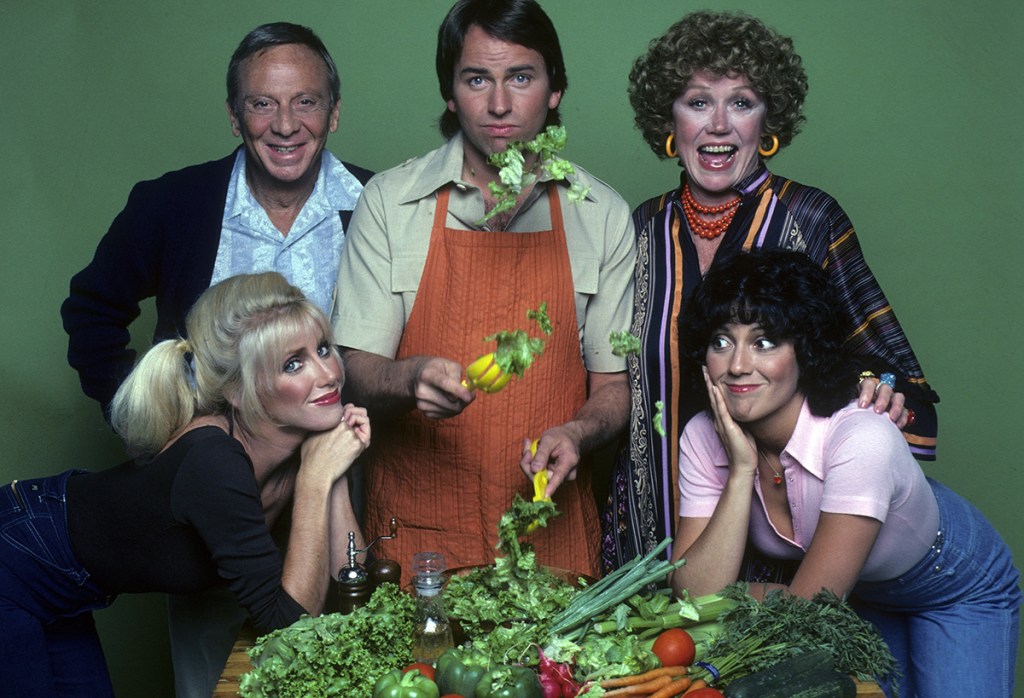
In some ways, it’s still difficult to believe that John Ritter passed away 20 years ago at the age of 54, yet thanks to his work in television and film — especially as part of the Three’s Company cast — his memory endures.
“John could have let being the show’s top-billed star — and, as a natural farceur and brilliant physical comedian, his producer’s favorite — go to his head,” muses Mann. “Instead, he set the tone and example for a fun-loving, low-drama set. When tensions arose, he’d fall over the couch or do another bit to crack everyone up and bring levity back into the workspace. He saw Joyce as TV’s most talented physical comedienne next to Lucille Ball, and he especially loved working with Suzanne, who made him laugh. And he loved his co-stars. All of them. He knew they had something special. Despite stresses behind the scenes, he turned down doing a Jack Tripper-centered spin-off numerous times as early as the show’s third season and through the seventh. His sensitivity and goofiness as John and Jack made him so endearing and helped create a much-needed antidote to the ’70s-’80s macho male.”
He was born Jonathan Southworth Ritter on September 17, 1948 in Burbank, California, and came to performing honestly: his father, Tex Ritter, was an early pioneer of country music and took to performing on the radio and stage. But initially John actually studied psychology at the University of Southern California, deciding to make the shift to theatre arts. He transferred over to the USC School of Dramatic Arts, graduating in 1973 and thought he’d follow a stage career, but, instead, found himself guest starring on such episodic television shows as M*A*S*H, The Bob Newhart Show, The Mary Tyler Moore Show and, especially, The Waltons, on which he would appear 18 times in the role of Reverend Matthew Fordwick.
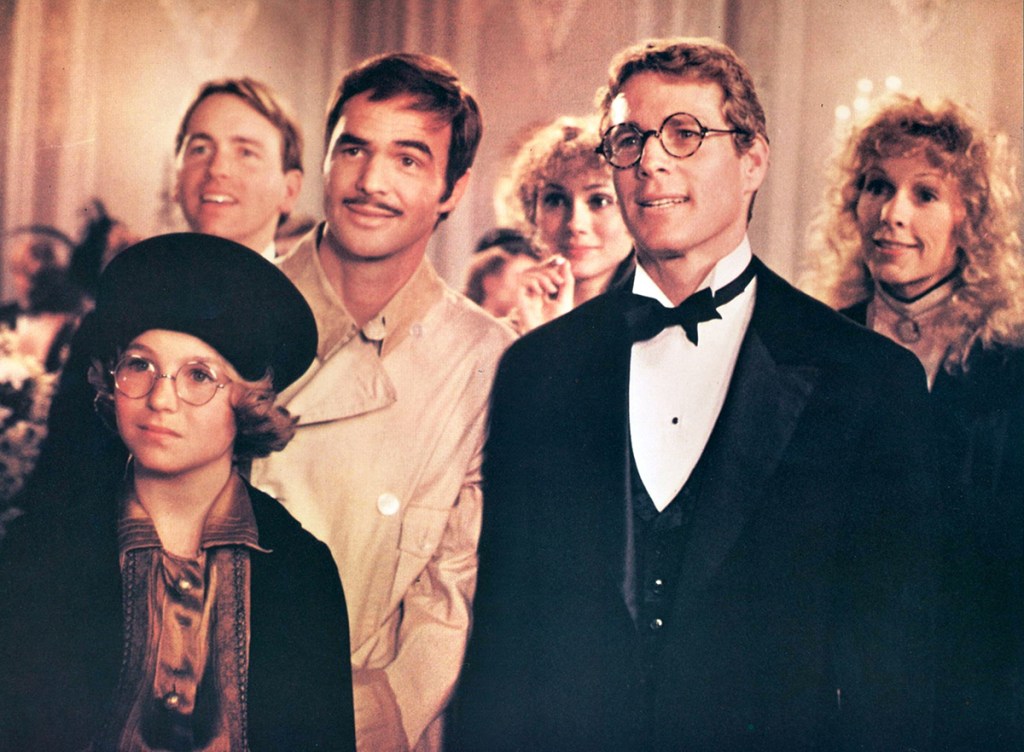
Mann points out that while the actor “had great versatility and could play dramatic roles, it really was the MTM comedies that tilted him into primarily a sitcom star.”
Three’s Company arrived in 1977. “The show was called Three’s Company, but it might as well have been called The John Ritter Show,” says Richard Kline, who played Jack’s best friend, Larry Dallas, “because he drove the physical comedy and the relationship comedy. He was the star of that show no matter how many blondes came and went.”
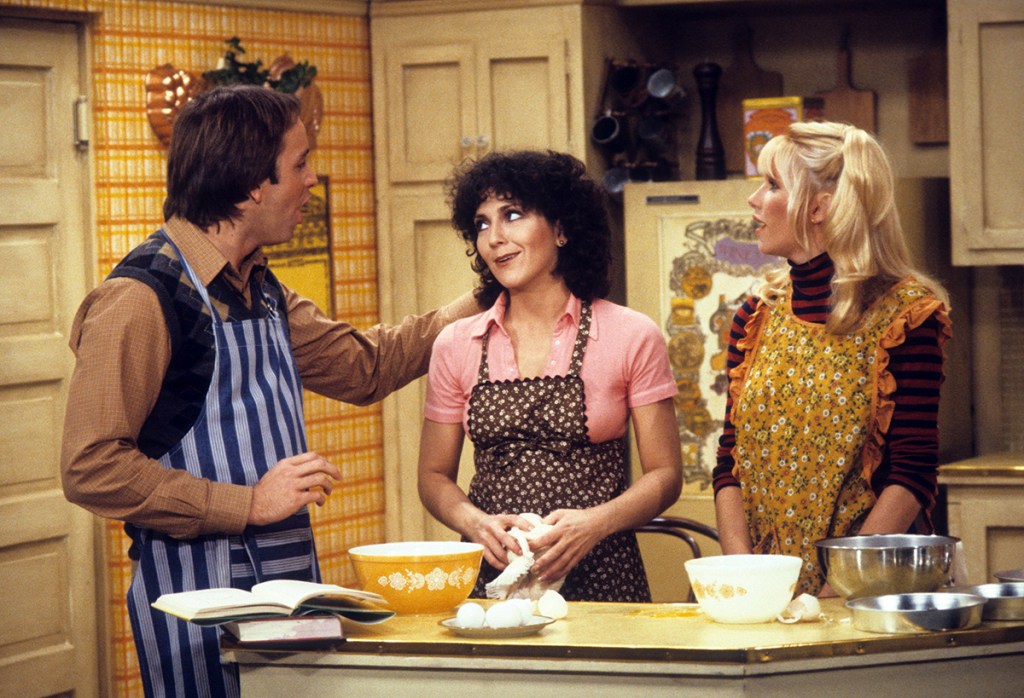
John himself did an interview in which he admitted that although he loved the series, he was nonetheless embarrassed to say so — though that changed when comedy legend Lucille Ball sang her praises for the show and of Ritter.
During and after the show, Ritter appeared in a number of films, but it was really television that the actor called home, starring in the Three’s Company spin-off, Three’s a Crowd (1984 to 1985), Hooperman (1987 to 1989), Hearts Afire (1992 to 1995) and 8 Simple Rules … For Dating My Teenage Daughter (2002 to 2005). Sadly, that would be his final sitcom as during rehearsal for an episode on September 11, 2003, he collapsed, dying later that night from a previously undiagnosed congenital heart defect, which resulted in aortic dissection.
In his personal life, he was married to actress Nancy Morgan from 1977 until their divorce in 1996, and actress Amy Yasbeck from 1999 until his death. He’s the father of four, including actor Jason Ritter.
Strangely enough, Marty Davidson, who directed Ritter in the 1980 superhero comedy Hero at Large, says the memory of the actor’s funeral still stands out to him. Following the tributes paid to his memory, the back doors of the movie theatre the wake had been held in burst open and a hundred-piece marching band from USC, dressed in full regalia, got about 200 people on their feet and marching out onto Hollywood Boulevard and into a nearby bowling alley for food, drinks and celebration. “It was an amazing experience,” he laughs, “because even when John passed away in such a sad way, we were all still overwhelmingly moved and laughing and having fun.”
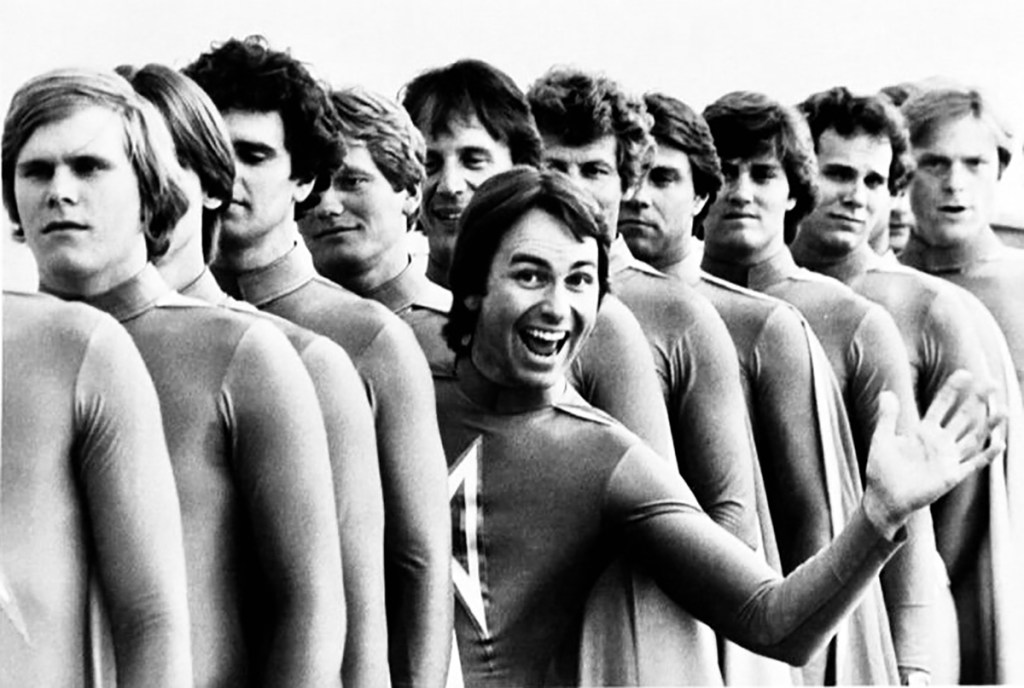
Joyce DeWitt as Janet Wood
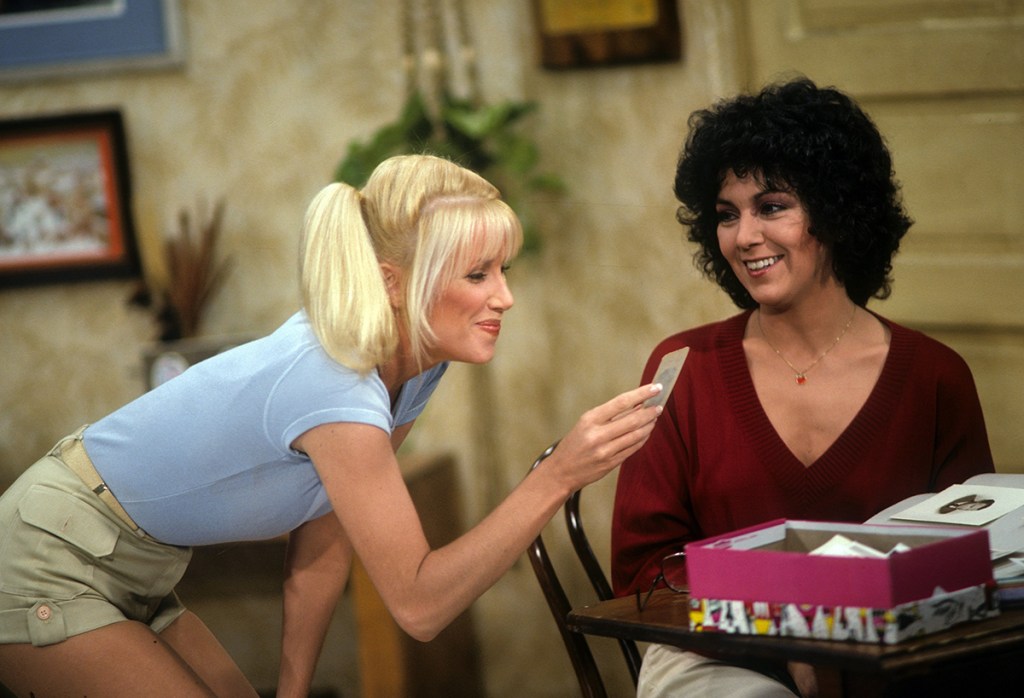
Chris Mann describes Joyce as being the most serious of the three original roomies in the Three’s Company cast. “As a longtime theatre actress and director,” he explains, “she was committed to making the characters and their relationships as three-dimensional as possible within the, at times, T&A-showcasing, sitcom farce format. So, despite being a naturally shy and soft-spoken person, she stood her ground when she felt the producers were writing jokes at the expense of what she calls character truth. That, coupled with one of the producers calling their showrunning style a ‘benevolent dictatorship,’ led to some serious creative disagreements. But she made Janet Wood — originally conceived as a heavy-handed character who emasculated Jack Tripper and was cast as sort of the Jane Russell to Suzanne’s Marilyn Monroe — the perfect, lovable longtime farce partner to Jack.”
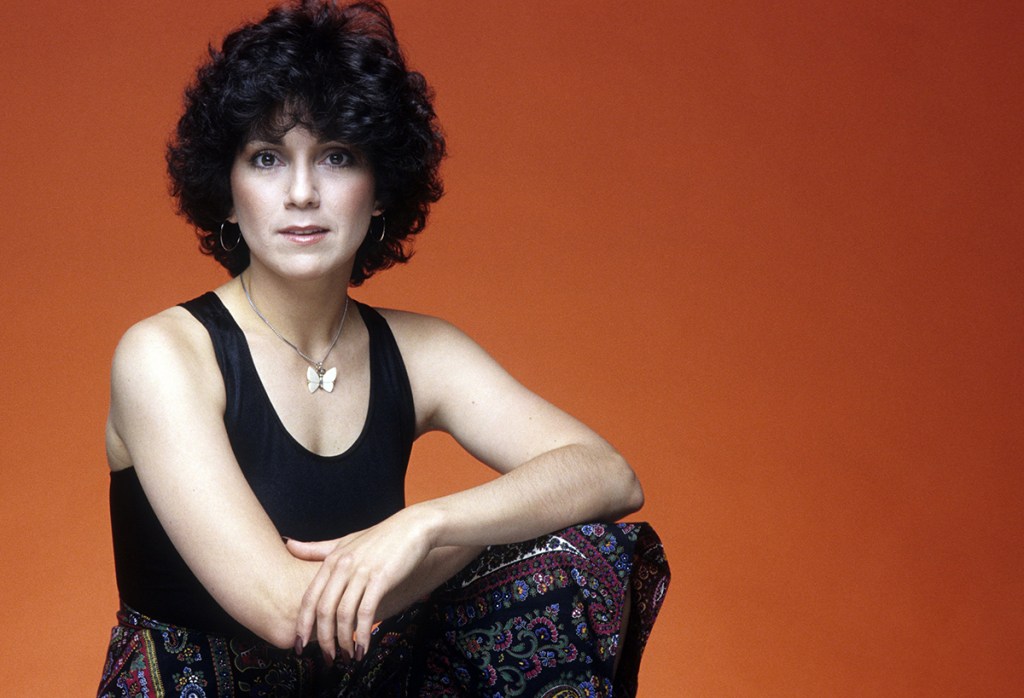
Born April 23, 1949 in Wheeling, Indiana, Joyce DeWitt first appeared on stage at the age of 13 and earned her bachelor’s degree in theater from Ball State University. Later, while performing in summer stock, she enrolled at UCLA’s Department of Theater Master of Fine Arts program.
She would appear on an episode of Baretta in 1975 and, the following year, the TV movie Most Wanted. Three’s Company was next, after which she essentially retired for a number of years, although she would return to the stage and begin making assorted TV guest appearances and have parts in seven films between 2009’s Call of the Wild and 2022’s Ask Me to Dance. Beyond acting, she’s worked with members of the House of Representatives and the Senate at the Capitol Hill Forum on Hunger and Homelessness. In 2009 she was arrested for drunk driving, to which she plead no contest.
Suzanne Somers as Christmas “Chrissy” Snow
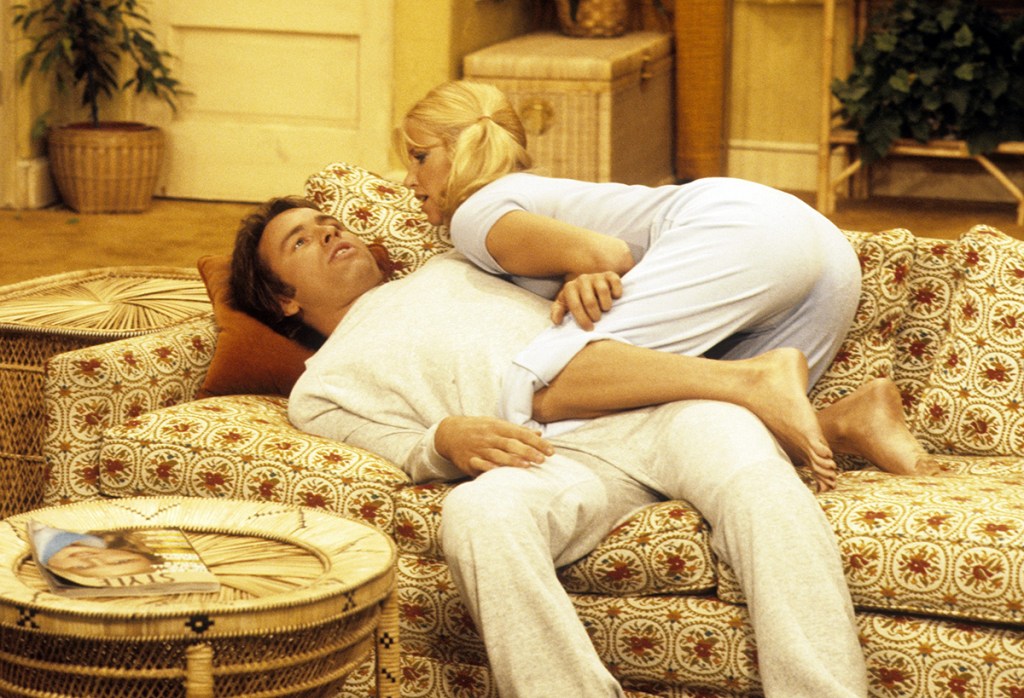
One point that Chris Mann emphasizes is that there was much more to Suzanne Somers than Chrissy Snow, and that she actually made more of the character than was written on the scripted page. (See The Vibrant Life of Suzanne Somers in 16 Rare Photos.)
“Instead of going with the been there-done that dumb blonde, Suzanne infused Chrissy with an adorable naïveté and a childlike heart that endeared her to audiences,” the author opines. “Through Chrissy, she had the childhood that was skipped over in her real life due to her father’s alcoholism, violence, and put-downs. He’d tell Suzanne she was ‘a big zero,’ so Suzanne was motivated to make Chrissy lovable and to make the most of her celebrity, including her lucrative status as a sex symbol, to prove herself to her father and anyone else who undervalued her. Her focus on personal stardom and ‘I’ll-show-you’ success drove her to great heights, but ran at odds with the ensemble work atmosphere at Three’s Company — and it ultimately pitted her against formerly adoring, older male producers who saw her character and much of her success as their creation, but did not view Suzanne as their show’s star.”
But she did and refused to remain silent, having an inner strength that she discovered when she was 16 and was getting ready for her first big date. “My mother,” she reflected in an exclusive interview, “had made me my junior prom dress and I loved it. I went to bed dreaming about it. But one night, my father came into my room super drunk and started ripping my dress to pieces. My mother came in screaming, ‘Are you crazy?’ and he punched my mother in the breast and knocked her down to the floor. I picked up my tennis racket and, with all my might, I brought it down on his head. I’m 16-years-old and my father is beating up my mother. I’m absolutely powerless and he was a champion prizefighter, but I did give him a concussion. And a lot of stitches. From there on in, I was afraid of my father, but what I realized later on is that he was afraid of me, because for that one moment I got the attitude of, ‘I’ll show you. You can’t do this anymore.’”
She reflected that sometimes the worst things in life in essence become a rocket fuel to get you through the tough times due to the fact that there is no life without “big fist” events. “You can either be a victim when these things happen to you,” Somers said, “or you can dust yourself off and ask ‘How can I learn from this? How can I grow from this? Where’s the lesson?’ I’ve used that throughout my life and career.”
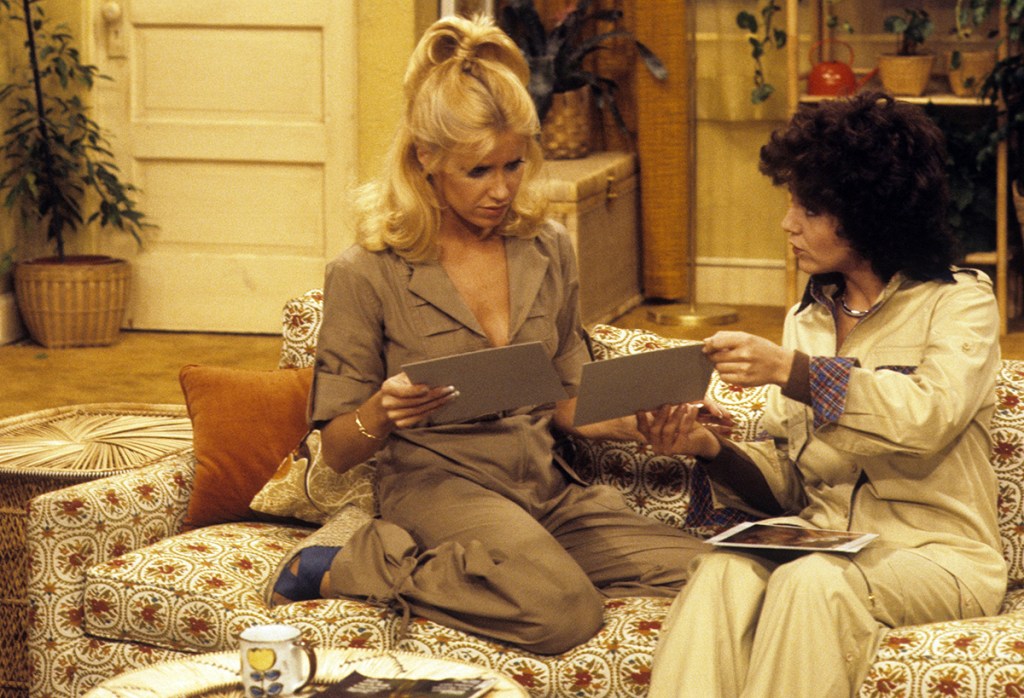
That life began on October 16, 1946 in San Bruno, California, and, as noted, was not an easy one, complicated by the fact that at age 19 she found herself pregnant and married the baby’s father, Bruce Somers, in 1965, the pair divorcing three years later. Career wise, she began pursuing acting work and ended up in uncredited roles in such films as Bullitt (1968), Daddy’s Gone A-Hunting (1969) and Fools (1970), but what turned out to be a fairly big break (at least on some level) was being cast as the “Blonde in T-Bird” in future Star Wars director George Lucas’ American Graffiti.
This led to an appearance on Johnny Carson’s The Tonight Show, where she talked about a book of poetry she’d published. Other small film roles followed as did some TV guest appearances. Needless to say, she was cast in Three’s Company in 1977 and, along with Ritter and DeWitt, found herself an instant sensation. Not quite as sensational was the fact that Ritter was making $20,000 more an episode than she or DeWitt were.
Somers, who married her future manager Alan Hamel in 1977, and was with him until the moment of her death, simply didn’t want to accept the situation with the Three’s Company cast and attempted to renegotiate her deal. The result was that she was let go from the series five seasons in. “At the height of my career, when I’m on the No. 1 show with the highest demographics of all women in television, I got fired for renegotiating, because I wanted to be paid commensurate with the men,” she related. “But they wanted to make me an example, the thinking being that if they could fire Chrissy Snow, every other woman on television beware. And it worked.”
It also taught her an important life lesson: “When you hit the top of the mountain, there’s nowhere to go further up, so you can only start going down, and that’s the time to go left or right and reinvent. I’ve actively reinvented myself over and over and I’ve taken every big fist that has come my way and turned it into rocket fuel. Kind of, like, ‘Oh yeah? Let me show you!’”
And she did, whether it was eventually starring on She’s the Sheriff (1987 to 1989) or Step by Step (1991 to 1998), hosting her own talk show, guest starring on other series, performing as a headliner in Vegas, becoming the spokesperson for the Thighmaster, competing on Dancing with the Stars, taking her breast cancer diagnosis and developing alternative, more natural treatments to chemotherapy; writing her memoir as well as two dozen self-help books or tips on better living, and the list goes on, making her loss even more marked for many.
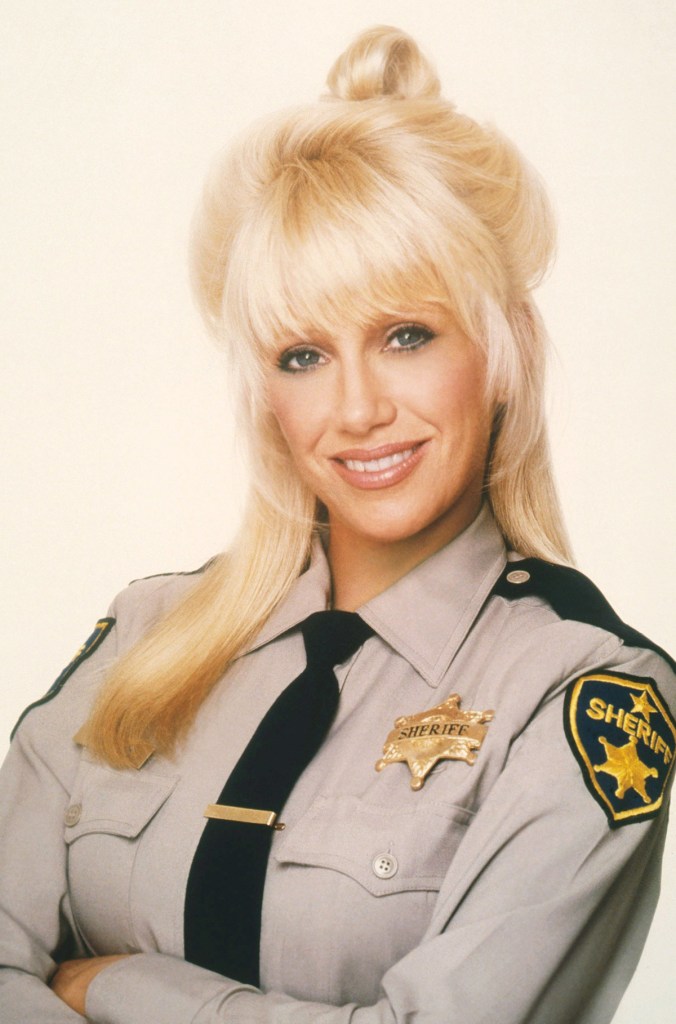
“Suzanne was a bright light and inspiration for so many, starting with Chrissy and then her bestselling 1988 biography Keeping Secrets, about overcoming adversity as a child of an alcoholic and navigating life as a young single mom with low self-esteem,” says Mann. “The stories you hear about her being so warm to young people especially — such as kid actors on her sitcom Step by Step — ring true: She was so kind to me when I met and interviewed her about her book for my college newspaper as a teenager. Just seeing her son Bruce and husband Alan light up when talking about her tell you how deep of a personal, lasting legacy she left.”
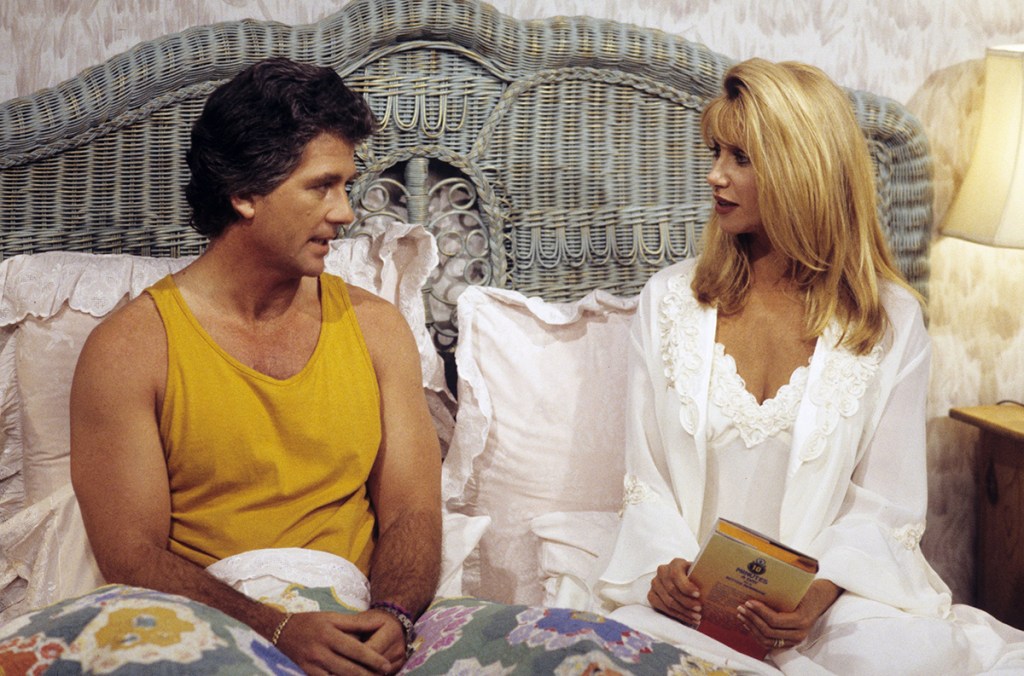
Norman Fell as Stanley Roper
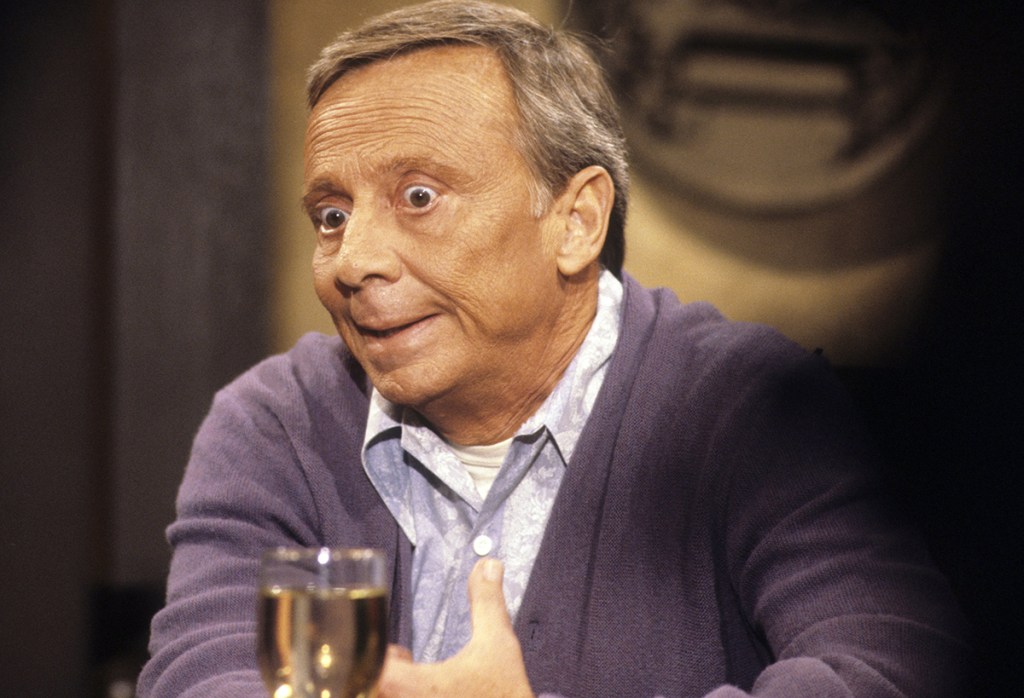
Character actor Norman Fell, born March 24, 1924, played Stanley Roper, landlord to Jack, Chrissy and Janet, but his credits on the big screen span from 1957’s The Violators to 1996’s Beach House, with The Graduate (1967) and Steve McQueen’s Bullitt (1968) in between.
He appeared on dozens of television shows and movies, and was a regular on Joe and Mabel (1955), 87th Precinct (1961 to 1962), Needles and Pins (1973) and, of course, Three’s Company and the short-lived spin-off, The Ropers. He was married three times, to Dolores Pikoos (1951 to 1954), Diane Weiss (1961 to 1973) and Karen Weingard (1975 to 1995). He died on Decemer 14, 1998 of bone marrow cancer.
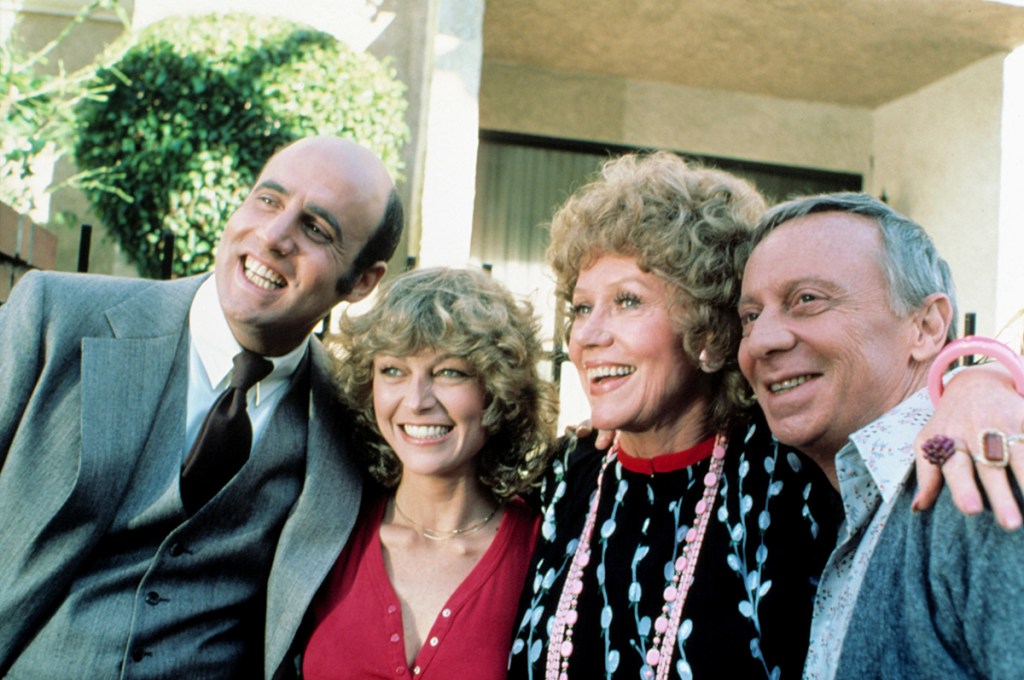
Offers Mann, “Norman Fell loved goofing around with John Ritter on set and absolutely did not want to leave the security of Three’s Company for the unknown fate of a spin-off. But ABC and the producers convinced him to do The Ropers anyway. Away from John, especially, he was never as happy. But he maintained a wicked sense of humor even in his seventies. Norman’s charm made Stanley a likable if often cringe-worthy buffoon who made us LOL when breaking the fourth wall by grinning at the camera.”
Audra Lindley as Helen Roper
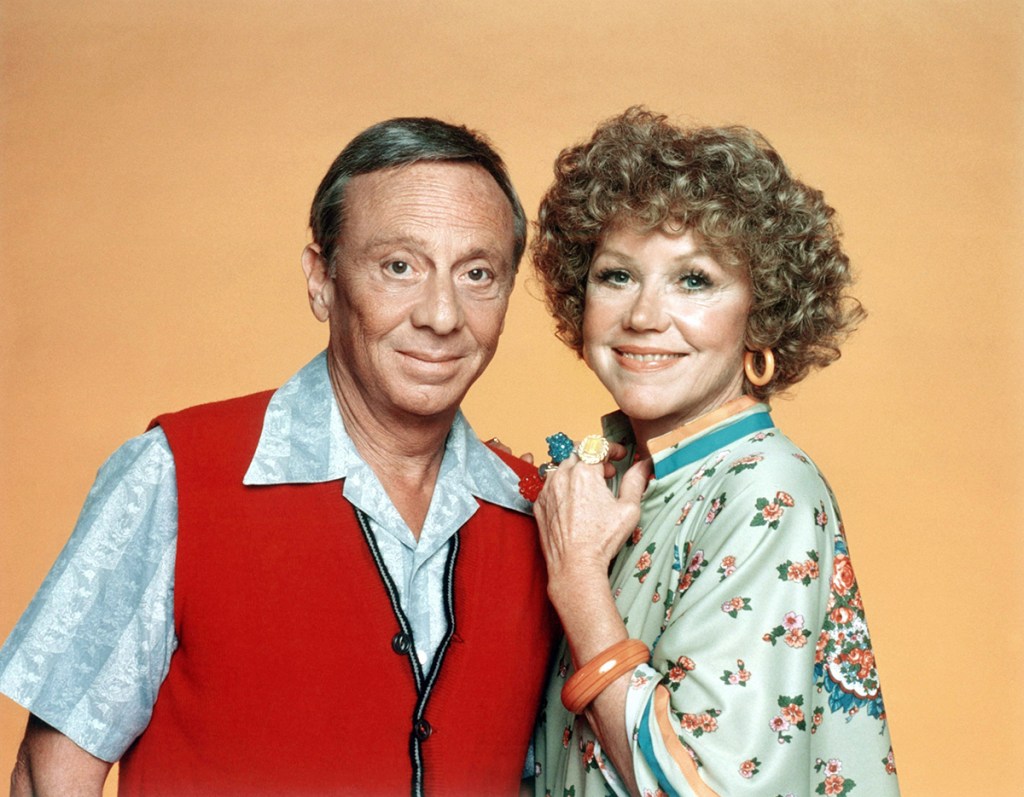
Audra Lindley’s Mrs. Roper in the Three’s Company cast was originally written as a gum-smacking, polyester pantsuit-wearing landlady with a sour attitude, notes Mann. It wasn’t until writers softened her up and wardrobe designer Len Marcus cloaked her in a flowy caftan or muumuu that she truly discovered Helen. She played her as warm and loving and maternal and fun and always seeking love and liberation. She said Helen would be her immortality — and nearly 50 years later, with the ‘Mrs. Roper Romps’ sweeping the world, she was right.
Audra Marie Lindley was born September 24, 1918, and her career started with her as a Hollywood stand-in, followed by stunt work and becoming a contract player with Warner Bros. She frequently appeared on Broadway beginning in 1943, before deciding to step away from acting so that she could raise her five kids.
Flash forward to the 1960s and she started working in television, making guest appearances and starring on the soap operas Search for Tomorrow and Another World. With Norman Fell, she starred on Three’s Company and The Ropers. She was married to Hady Ulm from 1943 until his death in 1970, and James Whitmore from 1972 until their divorce in 1979. She died of complications from leukemia on October 16, 1997.
Richard Kline as Larry Dallas
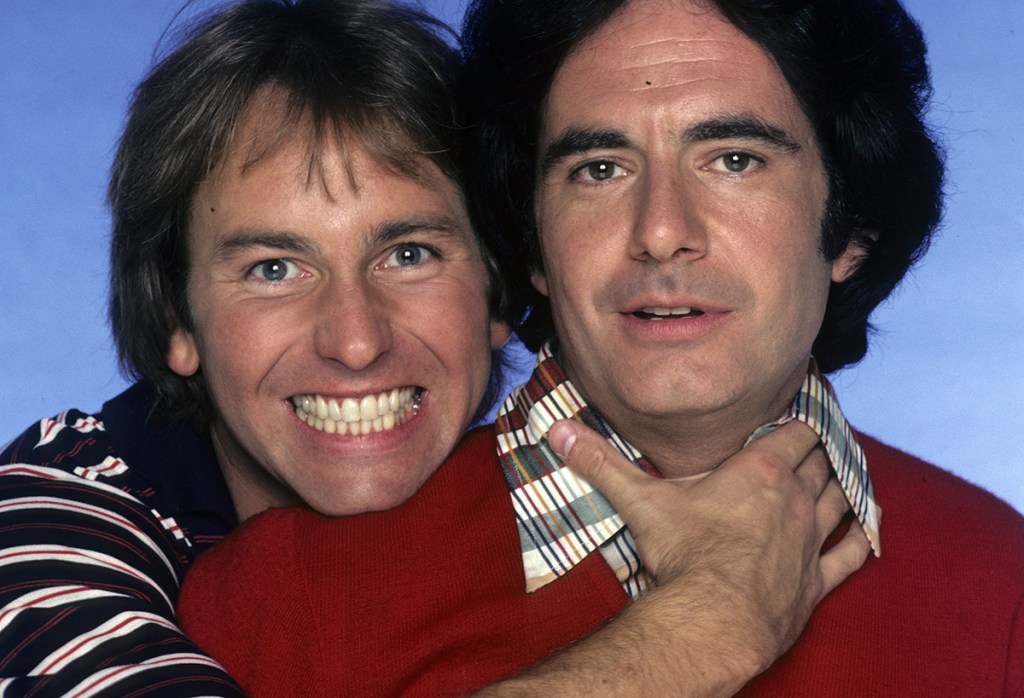
Although Larry Dallas was very much a supportive role as Jack Tripper’s best friend in the Three’s Company cast, actor Richard Kline got a lot of comedic mileage out of it. Born April 29, 1944, he served in the Vietnam War, after which he started to explore acting and got involved in theater, appearing in a variety of shows — although he wouldn’t make it to Broadway until a 1989 production of City of Angels. Prior to Three’s Company, he appeared on episodes of The Mary Tyler Moore Show, Eight is Enough and Maude. Afterwards, there were a great many guest appearances, he had a recurring role on It’s a Living (1985 to 1988), spent a year on the soap opera The Bold and the Beautiful and was a regular on Noah Knows Best (2000) and Around the Sun (2022 to 2023).
“Richard Kline was John’s favorite person to work with.,” Mann emphasizes. “They’d imitate Jerry Lewis and Dean Martin on set and concoct funny physical bits between the characters. Richard’s Larry Dallas started out as a one-shot character in season one, but soon became a regular until the end. Larry was a great sidekick who got Jack in lots of trouble — but Richard’s comic sensibilities also saw him carry off hilarious scenes with Don Knotts especially.”
Don Knotts as Ralph Furley
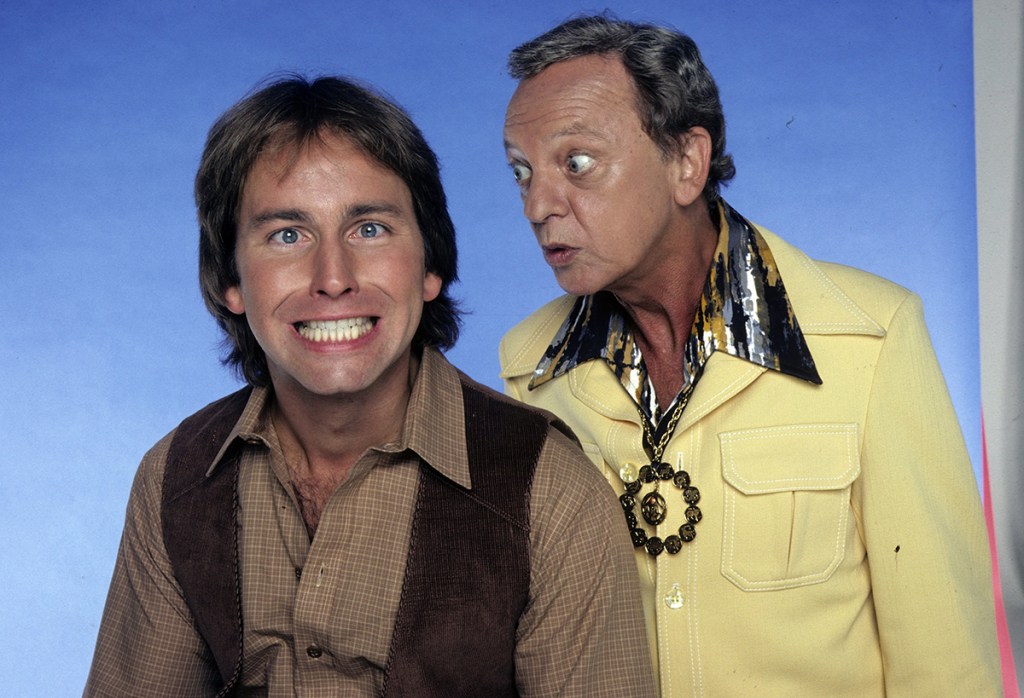
When the Ropers went off to star in their spin-off, there was a need for a new apartment complex landlord, and they found it in Don Knotts’ Ralph Furley. “Don was a legend and icon — but he was totally unassuming,” Mann details. “I’ve joked that I wanted to tell him, ‘Don’t you realize you’re Don Knotts?!‘
His character, Mr. Furley, really took shape when Suzanne left the Three’s Company cast in season 5. Suddenly, he became the dumb blonde. And his freaking out and hyperventilating and fainting brought the show some of its biggest laughs. John and Joyce worked off of him beautifully, as did Suzanne and her replacements. Ralph Furley and his psychedelic wardrobe were comedy gold.”
Born Jesse Donald Knotts on July 21, 1924, he came from a troubled childhood and somehow blossomed into a comedic film and television star. Besides Three’s Company, the actor is, of course, best known as Deputy Barney Fife on The Andy Griffith Show and for a recurring role on Griffith’s legal comedy-drama Matlock.
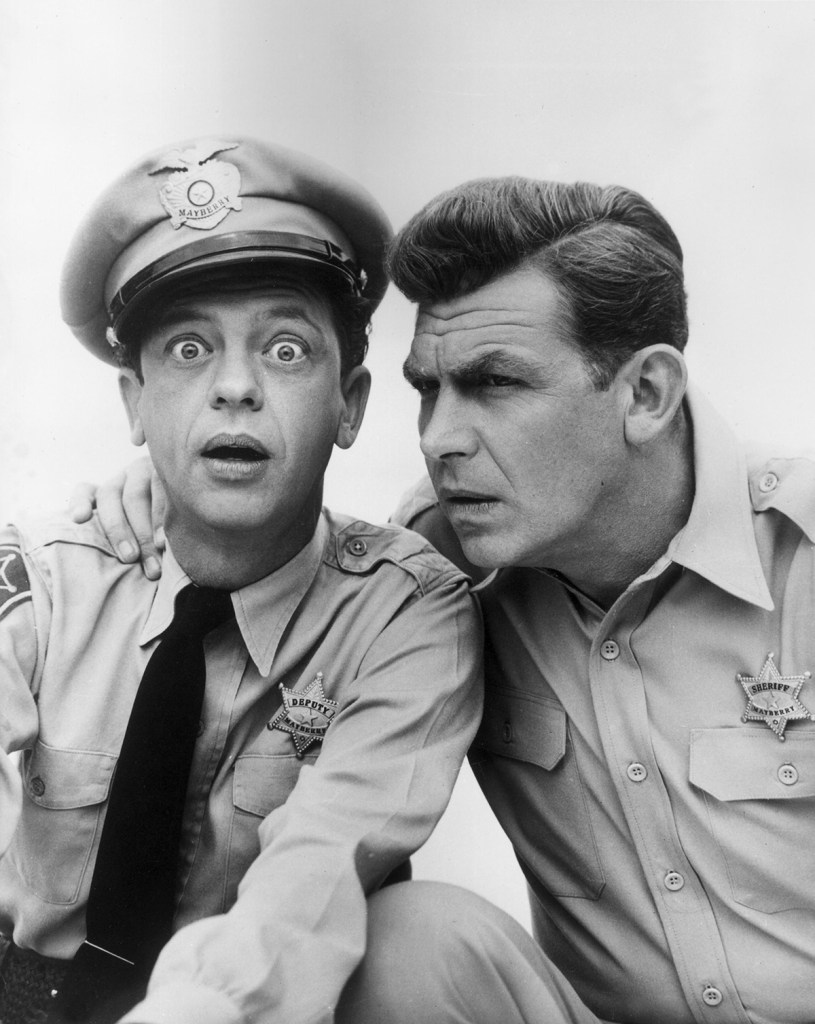
All of that in itself would make for a career, but Knotts appeared in three dozen films, on many TV shows and was a regular on Search for Tomorrow (1953 to 1955), The Steve Allen Plymouth Show (1957 to 1960), his variety series The Don Knotts Show (1970 to 1971) and had a recurring role on What a Country.
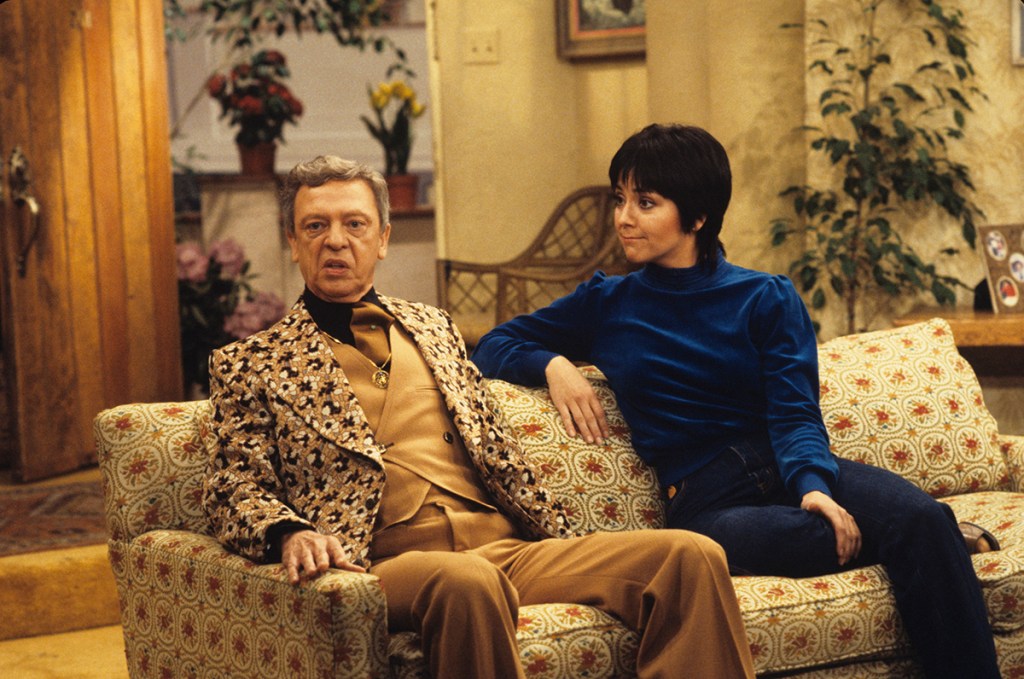
His daughter, Karen, revealed in an exclusive interview why playing Ralph Furley was so important to her father: “It allowed him to reach a new audience; another generation who had not really seen the reruns of The Andy Griffith Show the way you can now. So all of a sudden, these young people were seeing him for the first time. That was really fantastic. And that was great for my dad, because he enjoyed the mystique that Andy Griffith had, but he had this amazing ability to put the past in the past. He never went back and watched old episodes or any of that kind of thing. He was always in the present moment.”
Knotts was married to Kathryn Metz from 1947 to 1964, Loralee Czuchna from 1974 to 1983 and Frances Yarborough from 2002 until his death from lung cancer at 81 on February 24, 2006 .
Jenilee Harrison as Cindy Harris
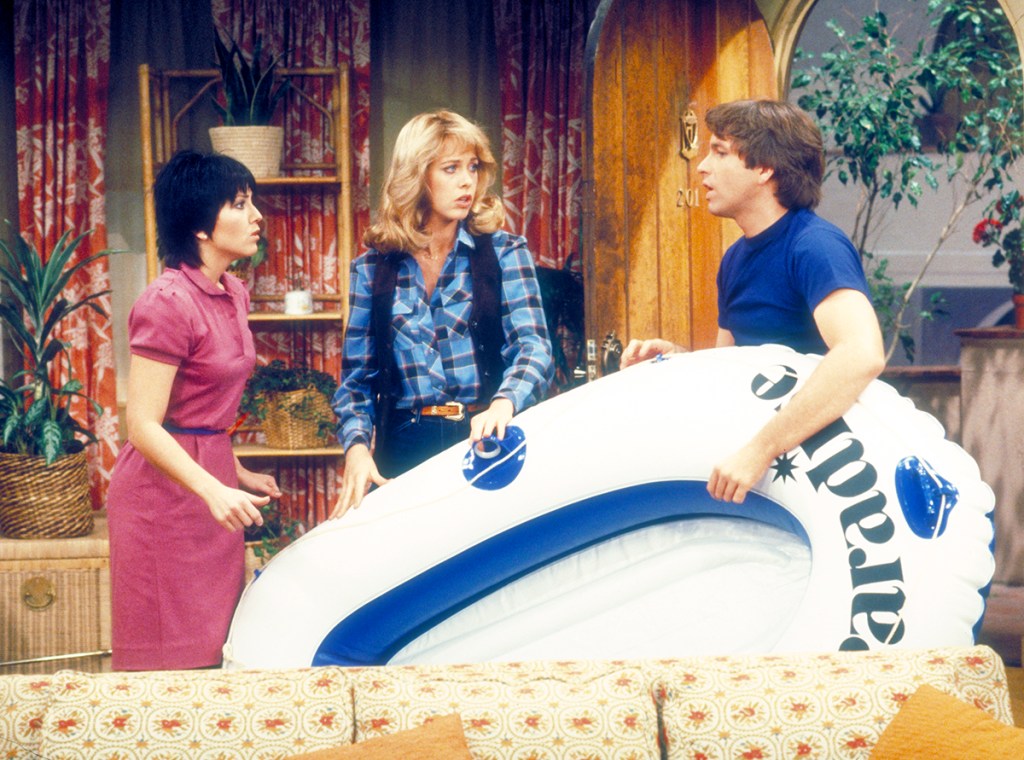
Mann makes an important point: “Jenilee Harrison was a former Los Angeles Rams cheerleader with very little acting experience when she was thrust into the role of Chrissy’s clumsy cousin, Cindy, during Suzanne’s contract dispute in season 5. She proved herself especially adept at physical comedy with John, but was just too young at age 21 to do double entendres with stars a decade her senior, so she was eventually written out.”
Born June 12, 1958, Harrison guest starred in episodes of CHiPs and 240-Robert before her gig on Three’s Company for 32 episodes between 1980 and 1982. In addition to making guest appearances on other shows, she was a regular on Dallas as Jamie Ewing for 69 episodes. Her last acting credit was the 2002 TV movie The Power.
Priscilla Barnes as Terri Alden
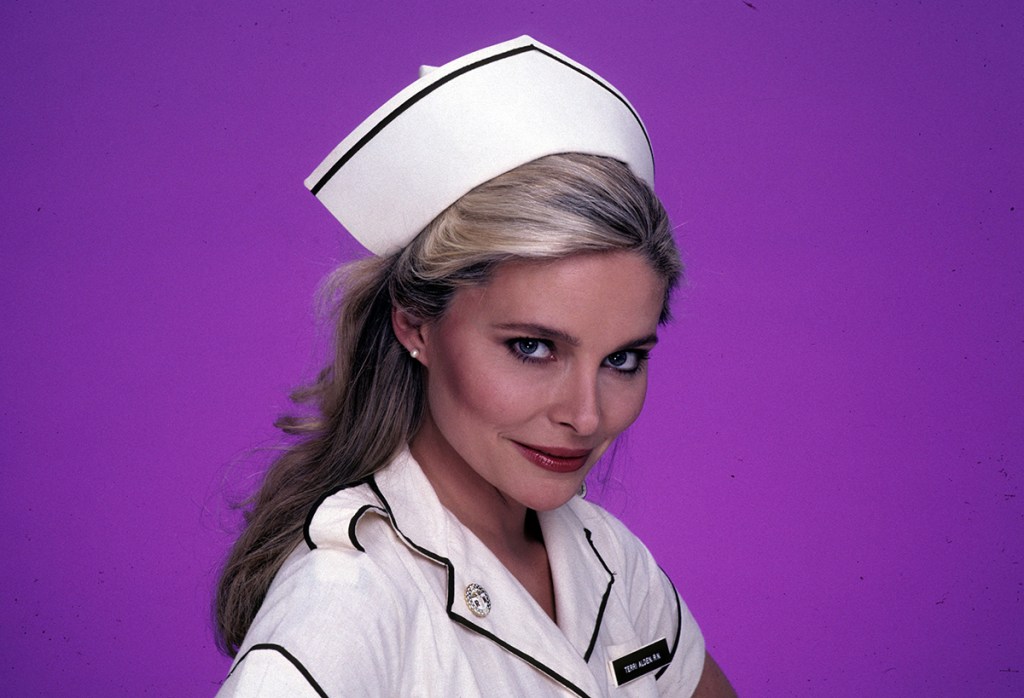
It’s Mann’s view that Priscilla Barnes helped bring Three’s Company back into the Top 3 shows as Suzanne’s permanent replacement, “the sultry, but silly Terri Alden, RN. Though her character never got the development it deserved, Priscilla meshed perfectly with John and Joyce during some of the show’s most laugh-out-loud physical scenes. Many fans feel she’s totally underrated. She and Joyce became very close friends and were even roommates for a while after the series ended.”
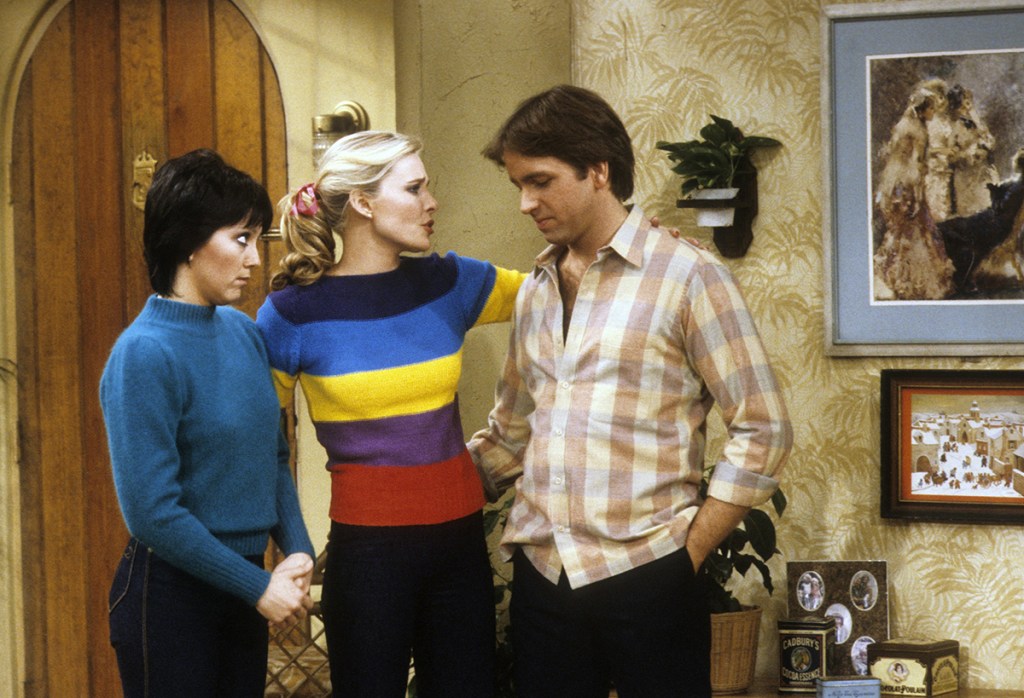
Born in either 1953 or 1954 (that isn’t clear), Barnes got her first break from veteran comedian Bob Hope who saw her in a fashion show and asked her to join his troupe at the Walter Reed Army Medical Center in Washington, D.C. for a 1973 performance. Intrigued by the notion of acting, she moved to Los Angeles and scored, like so many others, guest star appearances, though she did star in series The American Girls (1978) and would go on to star in a number of TV movies and feature films, including the James Bond thriller Licence to Kill (1989), Mallrats (1995), Final Payback (2001) and, most recently, Jonny’s Sweet Revenge (2017).
Closes Mann, who is in the midst of updating his book on the Three’s Company cast, says, “I was very fortunate to meet every one of these actors. They were all grateful for their Three’s Company cast experience, no matter how it ended. And they all seemed to get a kick out of a ‘kid’ who grew up with the show and found it so meaningful that he wanted to tell their show’s story. The truth is, kids loved the show because John, Joyce, Suzanne and company all kind of lived out their second childhoods playing on screen with each other.”
Three’s Company is currently airing on Antenna TV. To find Antenna TV in your city, please head to antennatv.tv.
